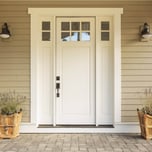Answer these simple questions and we will find you the BEST prices
Which type of solar quotes do you need?
It only takes 30 seconds
100% free with no obligation



- GreenMatch
- Blog
- How to Soundproof Windows
How To Soundproof Windows - Tips From Industry Experts

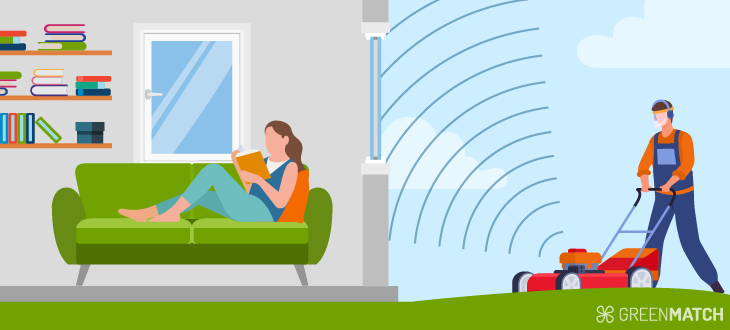
If you’re experiencing nuisance noise from nearby roads, busy streets or just noisy neighbours, you might be wondering if there is anything you can do about it? Well, the solution might just be to take a closer look at your windows.
While they can bring us light, fresh air, and beautiful views, they can also cause us trouble with irritating noises and disturbances. If your windows are old, thin, or have started to warp at the edges, you could be letting in many more sounds than you would like!
Even if your windows are brand new but you live in a hectic area, there are steps you can take to restore some peace and quiet to your home.
We spoke to industry experts, from estate agents to windows installers, to get the very best advice on eliminating noise from your home by soundproofing your windows. Whether you have money to spend or are on a strictly DIY budget, there are top tips below to help you out. Suitable for homeowners and renters, we’ve collected a full list of advice from those who know.
But firstly, here's how to soundproof your windows, according to our experts:
- Get to know your windows: Knowing your windows is the first step to ensuring you can plan ahead on aspects such as budget, window type, and potential changes.
- Remember ventilation: Ensure you consider ventilation needs and plan your soundproofing installations to allow access to windows and vents.
- Consider soundproof materials and elements for your windows: Sealing gaps around the frame with materials like foam, felt, or vinyl is an effective and affordable method for soundproofing and insulating windows.
- Upgrade your glazing: Upgrading to double or triple-glazed windows or investing in laminated glass with a polyvinyl butyral layer can significantly reduce noise pollution in your home by effectively absorbing and dampening sound.
- Employ a professional: For outdated windows, hiring a professional can provide valuable advice on the best glass upgrades and the potential benefits of choosing new styles or materials.
- Install cellular blinds or shutters, fibreglass panels, acoustic blankets or vinyl (MLV): Soundproof or acoustic curtains, along with cellular blinds and shutters, are effective and affordable solutions for reducing noise in your home, improving thermal performance and enhancing acoustic properties.
- Storm windows for extra certainty over weather damage: Storm windows provide an additional layer of protection for main glass windows.
- External soundproofing for increased shield against outside disturbance: Soundproofing can also be achieved from the outside by using dense, noise-absorbing plants, trees, or barriers like fences and shrubs to block and absorb sound waves, enhancing both aesthetics and noise reduction around your home.
1. Get to know your windows
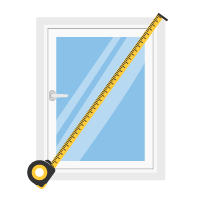
When it comes to dealing with noisy windows, it is important to first understand the type of windows you have, including the type of glazing, size, sealant and surrounds. This information will help you determine the best solution for reducing noise.
A good first step before soundproofing your windows is to measure them accurately, taking note of any unique shapes or angles. Once you have your measurements, and understand the materials you’re working with, you can better assess what options might work for you. For example, if you have single-pane windows you will likely need thicker, or heavier, solutions to block out noise than you would for double-glazed windows.
In addition, you should also consider if you’re looking for a temporary or permanent solution, for example, is the noise due to building work that might come to an end? Or do you live near a permanently busy road? This can help you to budget for the type of solutions that will work best for your situation.
Taking the time to accurately understand your windows and your requirements can save you time and money when it comes to getting the right soundproofing solutions.
2. Remember ventilation
As you consider soundproof options, keep in mind that some solutions, whilst blocking out noise, can also restrict access to airflow. Keep ventilation options in mind and plan your soundproofing installations around access to opening windows or vents.
3. Weatherstripping / Adhesive foam tape

Weatherstripping is a simple and effective method for soundproofing and insulating your windows. It works by sealing gaps around the window frame to prevent noise and drafts from entering your home. There are several materials to choose from, including foam, felt, and vinyl. Foam and felt are more affordable options, while vinyl is more durable and long-lasting.
To install weatherstripping, measure the length of your window frame and cut the weatherstripping material to size. Peel off the adhesive backing and attach it to the frame of the window, pressing it down firmly to ensure a tight seal. Adhesive-backed foam tape is a popular choice because it is easy to install and remove.
Weatherstripping not only reduces noise but also improves energy efficiency by preventing air leaks and drafts. This can help lower your energy bills and make your home more comfortable. It is also lightweight and easy to install, making it a popular choice for DIY projects.
Additionally, weatherstripping tape is designed to stop rain from leaking into your home, making it a great solution for plugging air holes and general insulation. When choosing weatherstripping materials, consider the level of adhesion needed and whether it can be easily removed without causing damage, especially if you are in a rental property.
4. Soundproofing foam
This simple, lightweight foam, is easy to install and is great for absorbing unwanted sound. You could use it directly around the window frame, or apply it over gaps, and it will absorb sound waves before they enter your home.
This is particularly effective if you have thin or poorly insulated window frames that let in a lot of noise. Soundproofing foam is relatively inexpensive and easy to install. You can purchase it in sheets or rolls and cut it to size with a utility knife. It is also lightweight and easy to work with.
5. Draft-excluding tape
Another straightforward soundproofing solution is draft excluding tape. These rolls of foam can be stuck directly around window frames to plug up gaps and block out noise.
They have the benefit of being a non-permanent, flexible solution, but can be purchased in different lengths and thicknesses to suit any window. Although they’re great for stopping unwanted cold air from getting in, they also act as a wonderful noise buffer as well.
6. Acoustic caulk or sealants
For those looking for a more permanent option, applying a new sealant or acoustic caulk could be the best choice.
This type of caulk is specifically designed to absorb sound and is more effective than standard caulk in blocking noise. By sealing gaps or cracks in and around the window frame with acoustic caulk, you can significantly reduce the amount of noise that enters your home.
Todd Saunders, CEO of Flooring Stores, told us:
If you want to soundproof your windows, you must first fill in any gaps in the insulation. Acoustic caulk is a great option for sealing any cracks or holes around the window frames, which can also let in exterior noise.

Unlike conventional caulking, which can harden and crack over time, acoustic caulk remains flexible for years, making it a more durable solution for soundproofing your windows.
To use acoustic caulk, first, clean the dust and dirt from your window frame. Then, apply the caulk evenly at a 45-degree angle, filling in any gaps that let in the air. Smooth the caulk over and leave it to dry. By plugging any holes between the window frame and wall, you'll create an effective noise insulation barrier that mutes the sound.
Another way to soundproof your windows is to add layers of sealant around all edges and openings of the windows. This creates an extra barrier to help eliminate noise coming from both ways. While this may sound like a daunting task, it's an inexpensive option that you can do yourself at home, no professional required.
To keep your sealant in good condition discover how to clean windows the most effective way.
7. Upgrade your glazing

Upgrading your windows can significantly reduce noise pollution in your home. For example, if you currently have single-paned glass, you could benefit greatly from an upgrade to double, or even triple glazing. Due to the layers of glass, which contain air or gas in between, they are excellent at absorbing and reducing noise levels from outside.
While they may be a more expensive solution, they would be worth investing in if you live in an especially noisy area or you currently have very old windows.
Another option for soundproofing your windows is to invest in laminated glass, which has a layer of polyvinyl butyral (PVB) between two layers of glass. This unique design helps dampen sound transmission. Standard laminated glass with two panes (12mm of air space, and 4mm of thickness) can reduce noise levels by about 27dB.

8. Employ a professional
If your windows are very outdated, it may be best to hire a professional to give you the best advice on which glass to upgrade to and whether you can benefit even more by choosing a new style or material.
9. Soundproof glazing
Unfortunately, completely ‘soundproof’ windows don’t exist. No matter how thick the glass there will always be some transfer of sound. However, some window companies have been improving residential windows in recent years to offer specialised noise-reducing glass.
Some of these products claim to be able to block up to 95% of external sounds. They do though, of course, come at a cost and before you take the leap of investing in sellers who make big claims, it’s worth doing some research.
Some specialised glass can require planning permission to install, so it’s recommended that you always speak to a trusted professional before you undertake any expensive upgrades.
If you want to find out more about soundproof windows and what options are available, as well as finding qualified installers who can help you out, check out this article on, ‘Which are the Best Soundproofing Windows?’.
10. Secondary glazing panels
Secondary glazing, as opposed to double glazing, is when a pane of acrylic or glass is attached over the inside of your existing windows. The benefit of this is that it is much cheaper than installing new windows, and can often be done easily yourself.
To install a secondary glazing panel, you will need to add a metal frame to your existing window and use magnets to attach the acrylic or glass sheet. While this method can be effective for reducing minor noise problems, it may not be sufficient for very loud, deep sounds. Keep in mind that without laminated or acoustic-grade glass, you may not notice a significant acoustic difference.
If you are looking for a more professional option, you can consider made-to-measure secondary glazing panels. These are installed by professionals and slide horizontally inside the window frame to create a snug fit and seal. While these panels may be more expensive than a DIY job, they can provide better sound insulation.
It's important to note that secondary glazing can change the aesthetic of your window and some people may not like the reduction in the depth of the window frame. However, for high-frequency noises like sirens or bird chirps, adding an additional layer of acrylic glazing may help reduce these sounds from entering your home.
11. Soundproof or acoustic curtains
These heavy, dense curtains are designed to absorb sound waves and prevent sound from entering your home. They are an affordable, simple solution and, If you are on a tight budget, you can even use thick blankets to cover your windows instead.
Lorraine Thompson, CEO and Founder of Best Florist Review shared the view that:
These are specially designed curtains that are made from sound-absorbing materials. They can be hung over your existing curtains or blinds and will help to reduce the amount of noise that enters your home.
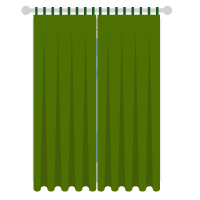
Although acoustic curtains may not eliminate all sound from entering your home, they can change the acoustic properties of a room and reduce the echo. They can also improve thermal performance and, the thicker the curtain, the more noise it will prevent.
Soundproof curtains can be found in various colours and styles to suit your decor and are typically lined with vinyl or similar material that absorbs sound. To maximize their effectiveness, they should be installed close to the window and cover the entire window area.
As a solution, these curtains are better suited for those with light levels of noise pollution, such as chirping birds or light road noise.
12. Install cellular blinds or shutters
Similarly to curtains, installing specialised blinds or shutters to your windows can help to add more layers which will absorb sound. There are a few options you could consider.
Jasen Edwards, the founder of Agent Advice says:
Install cellular shades, also known as honeycomb shades, on your windows. These shades not only provide insulation and light control but also help absorb sound due to their unique cellular structure.

Due to their specialised construction, cellular blinds are able to trap more air, which can act as a natural sound barrier. For further acoustic benefits, you could also choose to install shades with double cells.
Another great option is to install window shutters. These can be found in a number of materials, such as wood, which is naturally good at dampening sound. Some manufacturers also produce soundproof shutters, made from heavy materials like PVC which, when installed outside your windows, greatly reduce noise from seeping in.
While soundproof shutters can be more expensive than ordinary blinds or shutters, they are more effective at blocking out noise. The final price tag will depend on factors such as the size and type of shutter you choose, as well as the level of difficulty of the installation.
13. Fibreglass panel
Fibreglass is a well-known sound-absorbing material and when used in quilted panels, it can make very effective soundproofing window covers.
These panels can be hung from heavy-duty hooks installed around the window frame. The edges of the panels can also be attached using strong velcro, which creates a tight seal.
Due to the weight of a fibreglass panel, it’s able to lay flat against a window frame, which reduces the amount of sound that can leak in or out of the room. This is a common problem with curtains, which tend to admit sound at their top and bottom where the curtain folds don't hold tight to the window.
While quilted fibreglass panels may not be as visually appealing as curtains, they can be covered with curtains to create a more aesthetically pleasing look.
14. Acoustic blankets

Another product that brings noise reduction to your home is acoustic blankets. Specialise soundproofing blankets are designed to be a cost-effective solution to noise problems.
Made from dense materials such as polyester, fibreglass, woven cotton, or mineral wool they are great for bringing a bit of quiet to your space. David Scott, CEO and Co-Founder of Top Reviews suggests setting up a sound blanket:
A sound blanket consists of a layer of Mass Loaded Vinyl (MLV) placed between two layers of quilted fiberglass. It has grommets on the bottom so you can hang it like a curtain over your window. Depending on the model, velcro around the vertical edges can be used to secure it around the window. Because it is made of strong and thick material, it does not leave any space between the blanket and the window, as a regular curtain would. The acoustic performance is good. It provides enough sound absorption and sound shielding for your window.
15. Vinyl (MLV)

A further effective method to enhance the soundproofing of your windows is to consider applying mass-loaded vinyl (MLV) as an additional layer of protection. MLV is a heavy material that can effectively reduce the amount of external sound waves.
MLV is a type of soundproofing material made from a combination of PVC, vinyl, and heavy materials such as barium sulfate or calcium carbonate. It is commonly used to dampen impact sounds, such as those produced by engines or drums - so it’s incredibly effective!
You can either apply this to windows or hang it over them like heavy curtains. While MLV may not be the most attractive soundproofing material, it can be painted. For traffic noise, thicker and heavier materials such as MLVs are recommended. You could even use this as an inner layer to curtains of your choice to improve the look.
16. Carbon panels
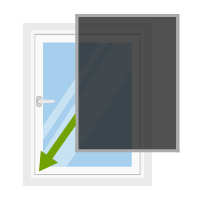
If you're looking for a high-tech sound barrier to use on your windows, consider using carbon panels. These panels are particularly effective at absorbing low-frequency sounds, such as those produced by thunder or nearby industrial machinery.
Similar to foam panels, carbon panels can be placed over your window to reduce unwanted noise. However, carbon panels are made of higher-quality materials, which means they offer better soundproofing benefits and a more comprehensive type of indoor quiet. It's worth noting that carbon panels tend to be more expensive than foam panels and may also block out light.
If you live near low-frequency sounds, are particularly sensitive to low rumbling noises, or need improved sound quality in your home (whether for practising music or simply enjoying peace and quiet), carbon absorption panels can be an excellent choice. Additionally, they can be easily removed when you don't need them.
17. Styrofoam
A cheap and easy DIY soundproofing material is styrofoam. If you've recently purchased a home appliance, you’ve probably got some of this material left over from the packaging!
Styrofoam is also known as polystyrene foam and because it is made up of 98 per cent air, it has great insulation properties that prevent sound wave reflection.
To maximize the effectiveness of styrofoam, it can be paired with a denser material to further dampen noise. Combining styrofoam with weatherstripping, fibreglass, or heavy curtains, you can increase the amount of sound being absorbed and significantly reduce noise pollution.
You might want to line your window frames with it or pad out the back of your curtains.
18. Use soundproof window film
Applying this thin, transparent film to your windows can help to reduce noise and also offer additional benefits like UV protection.
Jacky Chou, Principal and Director at Archute, recommended this solution:
Soundproof window film can be an affordable and effective method. The film is typically made from a thin layer of plastic that adheres to the window glass and helps to absorb sound waves.
As it’s relatively easy to install and can come in a range of design options, applying window film is a popular approach to soundproofing. It works by minimizing the vibrations on your glass, which reduces the overall noise.
19. Install window plugs
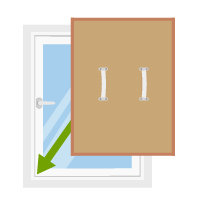
Another popular soundproofing solution is to use a ‘window plug’. These are custom-made inserts that fit snuggly into the window frame and are designed to block out noise. They are typically made of foam or acoustic materials and can be easily installed and removed as needed.
Window plugs are designed to block out entire windows, so, therefore, can cause issues if the noise problem is constant. However, they are a cost-effective way to soundproof, as they are made from inexpensive materials and are highly effective
By filling the space in front of the window with layers of acoustic foam, soundproof matting, and wood, the ‘plug’ will absorb incoming sound waves. Handles are added to the back surface of the wood for easy installation and removal.
The main downside to these plugs, however, is that they are not particularly attractive and the size of the plug must be exact to fit the window frame and avoid any gaps. They remain a popular choice, however, as they are non-permanent and inexpensive to install.
20. Window inserts (acoustic inserts)
In a similar way to secondary glazing, window inserts act as an additional barrier to sound, helping to reduce outside noise. The main difference, however, is that these are not permanent installations, but they are specifically designed for soundproofing.
Jon Morgan, CEO of Venture Smarter, recommends this idea:
Window inserts are an affordable and effective option. These are essentially additional panes of glass that can be installed over existing windows. They create an extra barrier against outside noise and can be easily removed when not needed.
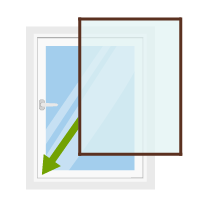
These products fit inside your existing window frames and can significantly reduce noise levels. They are easy to install and don't require any major modifications to your property. However, it's important to consult with a professional to determine if they're suitable for your windows before installation.
When using window inserts for soundproofing, there are a few tips to keep in mind. Measure your windows carefully before ordering inserts to ensure they fit well in the frame. Consider the different materials available and select the one that best fits your budget and needs.
21. Storm windows

Storm windows are usually installed to add a layer of protection to the main glass windows of a house. They usually are installed on the outside and can be made from glass, rigid plastic panels, or flexible materials. Whilst their main purpose is to protect against wind and weather damage they also have the added benefit of improving thermal insulation and soundproofing.
They do have a cost attached, but for those who desperately need new windows, these could be a great solution to help fortify the old windows until new ones can be installed.
22. Use furniture to soundproof
Placing large furniture items near your window can help to absorb excess sound. For example, placing a large couch in front of the window can help to reduce the vibration from outside.

A similar effect can be achieved by placing a large, thick rug near the window to help absorb sound. You could also consider hanging fabric or tapestries on the wall to dampen noise, or even place a bookshelf in front of noisy windows that you don’t use.
Adding these small changes alongside some of our other soundproofing tips can help to make a larger difference than just these steps alone.
23. External soundproofing
Soundproofing doesn’t just have to happen from inside the home, whilst we can attach panels to the outside of windows, there is more we can do to shield our windows from excess noise and vibrations.
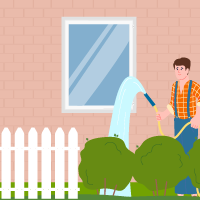
One of the best ways to soundproof your home from the outside is by using plants, trees or any other large objects, as noise barriers. Planting dense, noise-absorbing plants like evergreens or hedges outside your windows can help block and absorb sound while adding beauty to your home. Trees or shrubs around your home can also absorb sound waves and reduce noise levels, especially if you have a lot of traffic or other noise sources outside your home.
Erin Murphy, CEO of Best in Ireland, describes the benefits of external barriers:
You can experiment with imaginative placement of scraps or anything else to make a difference.This is an excellent choice since it improves the aesthetics of your home's outside without requiring you to make any changes that appear unappealing from the inside.
In addition to plants, barriers like shrubs or fences can fragment incoming sound waves. Consider setting up a wood fence to block noise from the street or planting a hedge or row of shrubs in front of your windows. The denser the plant, the more sound it’ll block. This is a convenient and eco-friendly option if you’re already looking to add some decoration to your garden.
Conclusion
Depending on the level of noise you’re trying to reduce, it may take some trial and error to find the perfect solution to rid your home of unwanted noise. Whether it’s simple weatherstripping, upgrading old, worn window frames, or simply moving some furniture, we hope there’s a solution here for you.
Consistent, disturbing noise can have a negative impact on both your home and your well-being, so take steps to put things right. By trying some of these soundproofing tips, you’ll be able to reclaim the calm and quiet your home deserves.

Becky is an experienced SEO content writer specialising in sustainability and renewable trends. Her background in broadcast journalism inspires reliable content to help readers live more sustainably every day.
We strive to connect our customers with the right product and supplier. Would you like to be part of GreenMatch?


